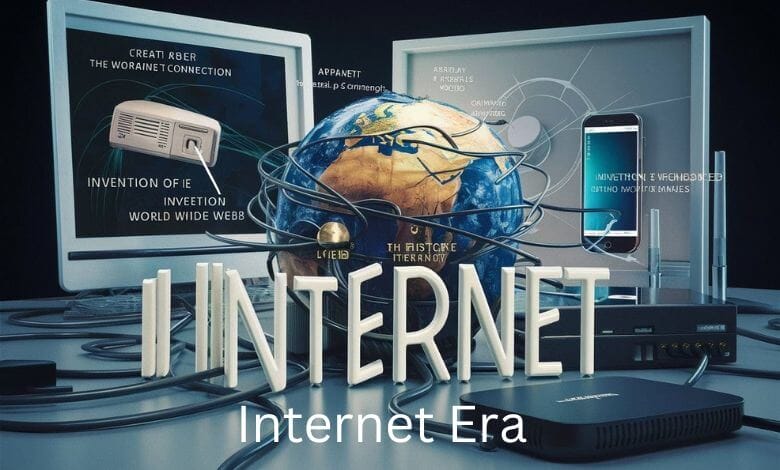Unveiling the Latest Innovations: What’s New in Electric Vehicles

The realm of transportation is undergoing a significant transformation, with electric vehicles (EVs) at the forefront of this shift. The journey from traditional combustion engines to electric powertrains marks a pivotal moment in automotive history, underpinned by advancements in technology, policy, and consumer preferences. This article delves into the latest developments in electric vehicles, exploring the technological innovations, emerging trends, and the impact of these changes on the environment and society.
Table of Contents
Introduction to Electric Vehicles
Electric vehicles, characterized by their reliance on electric motors for propulsion, represent a clean, efficient alternative to conventional vehicles. Unlike their gasoline-powered counterparts, EVs emit no tailpipe pollutants, offering a promising solution to the challenges of air pollution and climate change. The inception of electric vehicles dates back to the late 19th century, yet it is only in recent years that they have gained significant traction in the automotive market. This resurgence is fueled by advancements in battery technology, increased environmental awareness, and a growing commitment from governments and manufacturers to decarbonize transportation.

The appeal of electric vehicles lies not only in their environmental benefits but also in their performance and cost-effectiveness. Electric motors deliver instant torque, providing a smooth and responsive driving experience. Additionally, the lower operating costs of EVs, driven by cheaper electricity compared to gasoline and reduced maintenance requirements, make them an increasingly attractive option for consumers.
The transition to electric mobility is challenging. Concerns over driving range, charging infrastructure, and initial purchase costs have historically hindered widespread adoption. However, relentless innovation and supportive policies are rapidly addressing these barriers, paving the way for a future dominated by electric vehicles.
The Rise of Electric Vehicles in the Automotive Industry
The automotive industry is poised for a revolution, with electric vehicles taking center stage. This shift is driven by a confluence of factors, including stringent emissions regulations, evolving consumer preferences, and technological breakthroughs. Governments worldwide are setting ambitious targets to phase out internal combustion engines, propelling automakers to accelerate their transition to electric drivetrains.
The market share of electric vehicles is expanding at an unprecedented rate. Sales of EVs are soaring, buoyed by a growing selection of models across various segments, from compact cars to luxury SUVs and trucks. This diversification ensures that there is an electric vehicle to meet the needs and preferences of a broad spectrum of consumers.
Moreover, the automotive industry’s commitment to electrification is evident in the significant investments being made in research and development. Automakers are forging partnerships with technology companies and battery manufacturers to drive innovation, reduce costs, and enhance the performance of electric vehicles. This collaborative approach is crucial for overcoming the technical and economic challenges associated with electric mobility.
Advancements in Electric Vehicle Technology
The rapid evolution of electric vehicle technology is a testament to the ingenuity and determination of engineers and researchers. Battery technology, in particular, has seen remarkable progress, with significant improvements in energy density, charging speed, and lifecycle. These advancements are making EVs more practical for everyday use, extending driving ranges, and reducing charging times to levels comparable with refueling conventional vehicles.

In addition to battery improvements, electric vehicle technology is advancing across multiple fronts. Electric motors are becoming more efficient, power electronics are evolving, and regenerative braking systems are enhancing energy recovery. Moreover, the integration of advanced materials is reducing the weight of electric vehicles, further improving their efficiency and performance.
Another area of rapid development is vehicle-to-grid (V2G) technology, which allows electric vehicles to interact with the power grid. This technology not only supports the stabilization of the grid during peak demand but also enables EV owners to sell excess energy back to the grid, potentially turning their vehicles into mobile energy assets.
The Latest Electric Vehicle Models and Features
The current landscape of electric vehicles is characterized by an unprecedented variety of models, offering something for every type of driver. From compact city cars to high-performance sports cars and versatile SUVs, the latest electric vehicle models boast features and capabilities that rival, and in some cases surpass, those of traditional vehicles.
One of the standout trends in the latest EV models is the emphasis on connectivity and automation. Many electric vehicles now come equipped with sophisticated infotainment systems, advanced driver assistance technologies, and connectivity features that enhance the driving experience and improve safety. These technologies not only make EVs more appealing to tech-savvy consumers but also pave the way for fully autonomous vehicles in the future.
Furthermore, electric vehicle manufacturers are pushing the boundaries of design, leveraging the flexibility offered by electric powertrains to reimagine vehicle aesthetics and functionality. The absence of a bulky internal combustion engine allows for more creative use of space, resulting in more spacious interiors and innovative storage solutions.
Charging Infrastructure and Advancements
The expansion of charging infrastructure is critical for supporting the widespread adoption of electric vehicles. Recent years have witnessed significant advancements in this area, with the deployment of charging stations becoming more widespread and the technology itself becoming more sophisticated.
Public charging networks are increasing, offering a mix of slow, fast, and ultra-fast charging options to accommodate different needs. The availability of rapid and ultra-fast charging stations, capable of adding hundreds of miles of range in just a few minutes, is essential for alleviating range anxiety and making long-distance travel feasible in electric vehicles.
In addition to the expansion of public charging infrastructure, innovations in home charging solutions are also occurring. Smart chargers, which allow users to control charging times and optimize electricity usage based on grid demand and electricity rates, are becoming more common. These technologies not only enhance the convenience of owning an EV but also support the integration of renewable energy sources into the grid.
Government Incentives and Policies for Electric Vehicles
Government policies and incentives play a pivotal role in accelerating the transition to electric mobility. Around the world, governments are implementing a range of measures to promote the adoption of electric vehicles, from financial incentives such as tax credits and rebates to regulatory initiatives like low-emission zones and mandates for EV sales.
These policies are designed to offset the higher upfront costs of electric vehicles, making them more competitive with traditional cars. Incentives such as reduced registration fees, exemptions from road tolls, and access to carpool lanes further enhance the attractiveness of EVs.
Moreover, governments are investing in the development of charging infrastructure and supporting research and development efforts to advance electric vehicle technology. These comprehensive approaches are essential for creating a favorable environment for the growth of electric mobility.
Emerging Trends in Electric Vehicle Design and Aesthetics
As electric vehicles continue to evolve, so too does their design language. The transition to electric powertrains is enabling designers to break free from the constraints of traditional automotive design, leading to innovative and striking vehicle aesthetics.
Electric vehicles are increasingly characterized by sleek, aerodynamic profiles that enhance efficiency and performance. The use of lightweight materials and advanced manufacturing techniques also contributes to the distinctive look and feel of modern EVs.
Furthermore, the interior design of electric vehicles is transforming, with a focus on minimalism, sustainability, and technology. The use of eco-friendly materials, spacious layouts, and cutting-edge digital interfaces reflects the evolving values and preferences of consumers. These design trends not only make electric vehicles more appealing but also align with broader societal shifts toward sustainability and digitalization.
The Future of Electric Vehicles
The future of electric vehicles is bright, with continued innovation and investment set to drive further advancements in technology, performance, and affordability. The convergence of electrification with other technological trends, such as autonomous driving and connectivity, points to a future where electric vehicles are an integral part of a more innovative, more sustainable transportation ecosystem.

In the coming years, we can expect to see electric vehicles with longer ranges, faster charging capabilities, and enhanced features becoming the norm. Advances in battery technology and materials science will play a key role in achieving these improvements, making electric mobility accessible to an even wider audience.
Moreover, the integration of electric vehicles into the broader energy system through technologies like vehicle-to-grid holds the potential to transform the way we generate, distribute, and use energy. This symbiotic relationship between electric vehicles and renewable energy sources will be crucial for achieving a carbon-neutral future.
Impacts of Electric Vehicles on the Environment and Sustainability
The shift towards electric vehicles is poised to have profound impacts on the environment and sustainability. By displacing internal combustion engine vehicles, electric cars can significantly reduce greenhouse gas emissions and improve air quality in urban areas.
Electric vehicles’ environmental benefits are maximized when they are powered by renewable energy sources. Aligning clean transportation with clean energy is essential for achieving the goals of the Paris Agreement and averting the most catastrophic impacts of climate change.
Furthermore, the adoption of electric vehicles supports the transition to a more circular economy. Advances in battery recycling and reuse can mitigate the environmental impact of battery production and disposal, further enhancing electric vehicles’ sustainability credentials.
What are the Latest Developments in Electric Vehicles?
The electric vehicle sector is characterized by rapid innovation and development. Recent breakthroughs in battery technology, such as solid-state batteries, promise to deliver higher energy densities, improved safety, and longer lifespans. These advancements could revolutionize electric vehicle performance and economics, making EVs more appealing to a broader range of consumers.
Additionally, the proliferation of electric vehicle models across all segments of the automotive market is providing consumers with more choices than ever before. From affordable compact cars to luxury sedans and rugged trucks, there is an electric vehicle to suit every need and preference.
The development of autonomous electric vehicles also represents a significant frontier in the evolution of transportation. These vehicles, capable of operating without human intervention, could transform mobility, making it safer, more efficient, and more accessible.
Conclusion: Embracing the Future of Transportation
The journey toward a future dominated by electric vehicles is well underway, marked by remarkable advancements in technology, policy, and consumer acceptance. As we unveil the latest innovations in electric cars, it’s clear that the potential of electric mobility extends far beyond reducing emissions. Electric vehicles are at the heart of a broader shift towards sustainable, intelligent, and interconnected transportation systems.
Embracing the future of transportation means not only adopting electric vehicles but also supporting the development of the infrastructure, policies, and technologies that enable their widespread use. Realizing the full potential of electric mobility requires a collective effort from governments, industry, and consumers.
As we move forward, continued innovation and collaboration across the electric vehicle ecosystem will be crucial for overcoming the remaining challenges and unlocking the transformative benefits of electric mobility. The future of transportation is electric, and the journey there is one we can all contribute to and benefit from.






